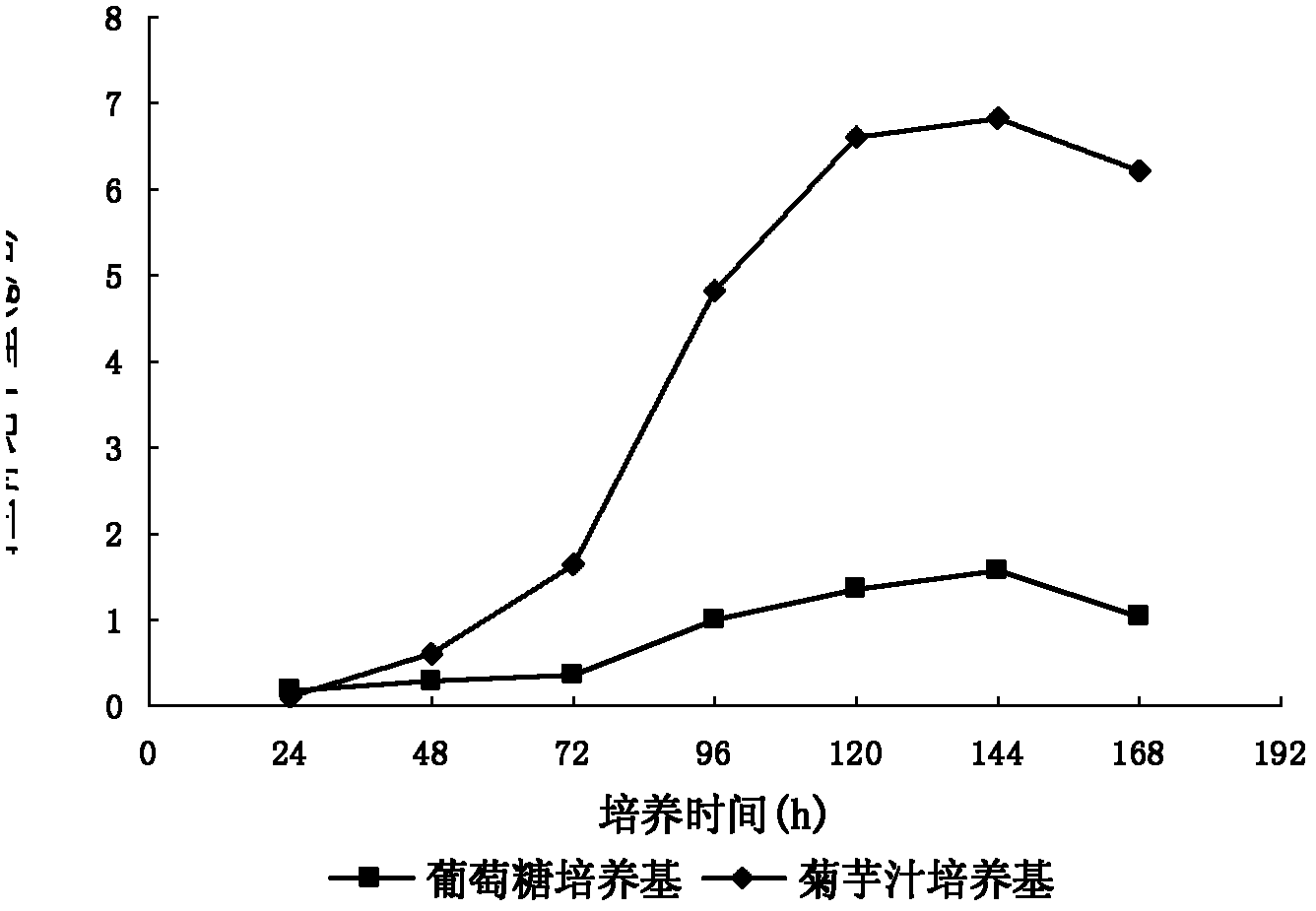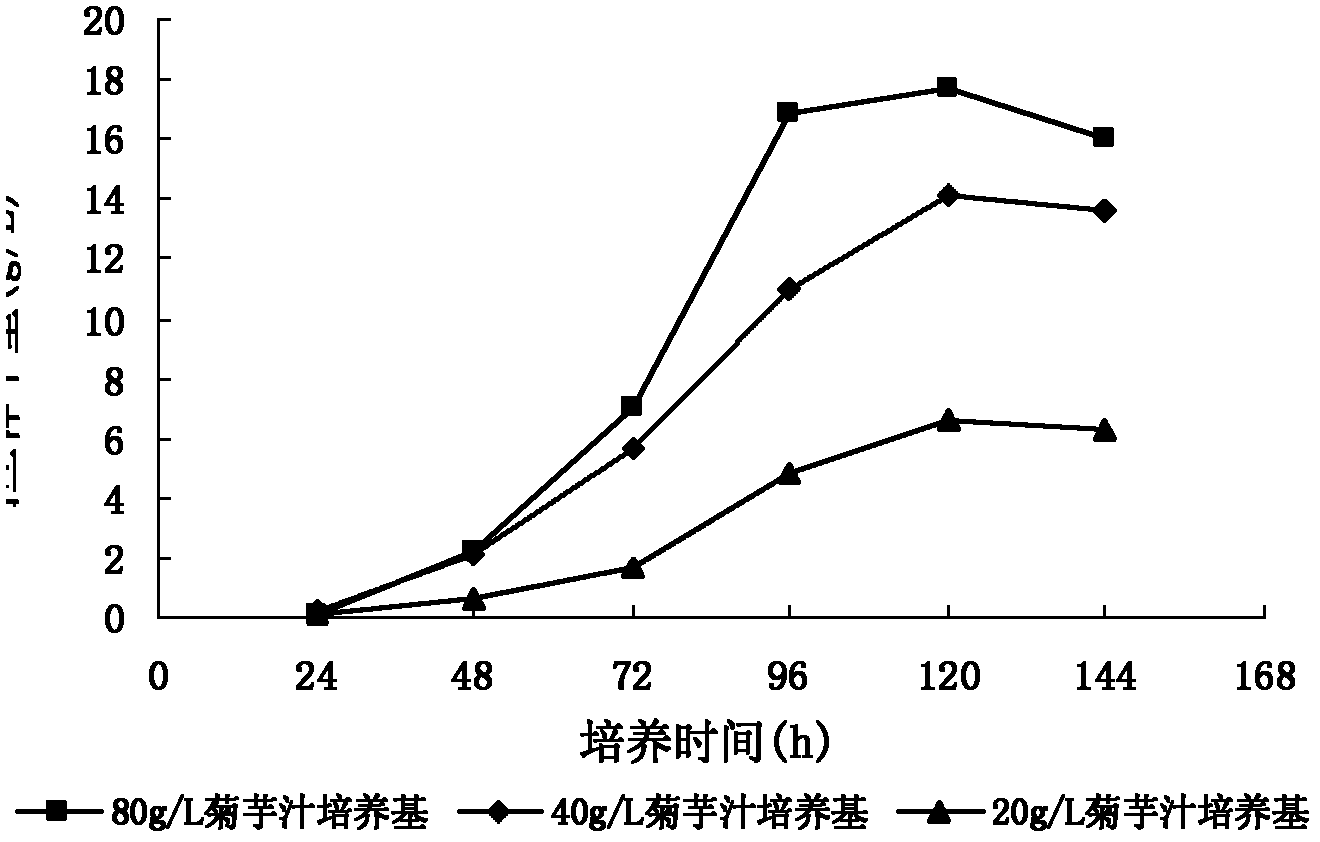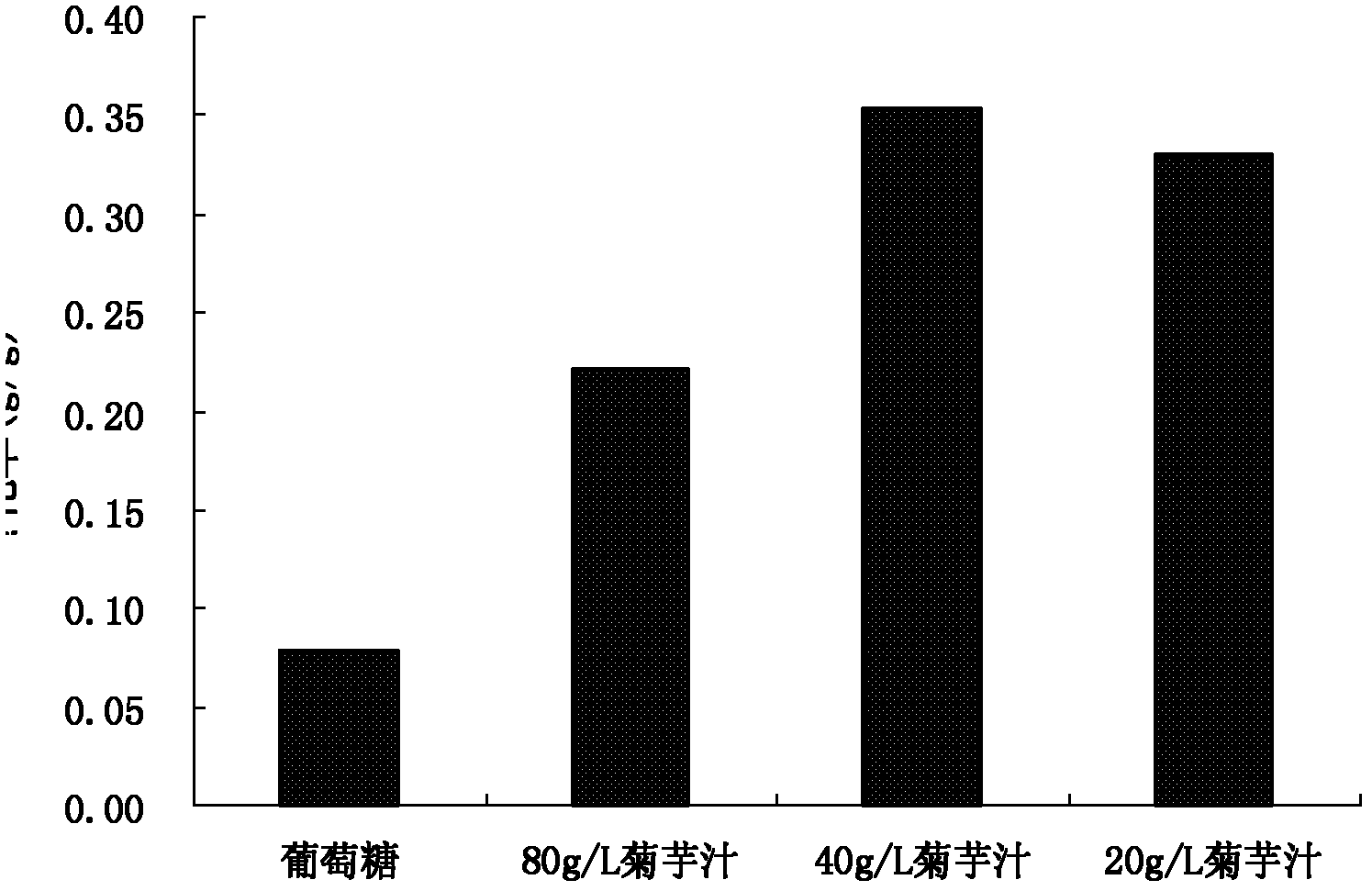Method of culturing coriolus versicolor-induced oxalate decarboxylase through jerusalem artichoke carbon source
A technology of Coriolus versicolor and oxalate decarboxylase, which is applied in the field of preparation of oxalate decarboxylase, can solve the problems of inability to cultivate and low economic value, and achieve the effects of easy operation, stable enzyme production and simple method
- Summary
- Abstract
- Description
- Claims
- Application Information
AI Technical Summary
Problems solved by technology
Method used
Image
Examples
Embodiment 1
[0031] Production of Coriolus versicolor from Jerusalem artichoke juice (the initial pH value of the medium is 5.0)
[0032] Fresh Jerusalem artichoke was steamed at 105°C for 15 minutes, then water was added at a mass ratio of 1:1, and homogenized to obtain Jerusalem artichoke pulp. The Jerusalem artichoke pulp was leached at 80°C for 1 hour, filtered through two layers of gauze, and centrifuged at 8000r / min for 10 minutes to obtain Jerusalem artichoke juice. The total sugar content of the Jerusalem artichoke juice was determined by the phenol-sulfuric acid method (using glucose as the standard sugar) at 4°C. Save it for later use. Add Jerusalem artichoke juice containing 1g total sugar (calculated as glucose) to every 50mL fermentation medium, then add 0.15g peptone, 0.05g potassium dihydrogen phosphate, 0.025g MgSO 4 ·7H 2 O, 0.01g Na 2 HPO 4 12H 2 O, and 50 μL of trace elements (the formula of trace elements is: FeSO 4 ·7H 2 O 10g / L, MnSO 4 ·H 2 O 1.0g / L, ZnSO 4 ...
Embodiment 2
[0035] Production of Coriolus versicolor from Jerusalem artichoke juice (the initial pH value of the medium is 5.0)
[0036] Fresh Jerusalem artichoke was steamed at 105°C for 20 minutes, then water was added at a mass ratio of 1:5, and homogenized to obtain Jerusalem artichoke pulp. The Jerusalem artichoke pulp was leached at 90°C for 1.5h, filtered through two layers of gauze, centrifuged at 8000r / min for 10min to obtain Jerusalem artichoke juice, and the total sugar content of the Jerusalem artichoke juice was determined by the phenol sulfuric acid method (using glucose as the standard sugar), at 4°C Store under conditions. Add Jerusalem artichoke juice containing 0.35g total sugar (calculated as glucose) to every 50mL fermentation medium, then add 0.15g peptone, 0.05g potassium dihydrogen phosphate, 0.025g MgSO 4 ·7H 2 O, 0.01g Na 2 HPO 4 12H 2 O, and 50 μL of trace elements (the formula of trace elements is: FeSO 4 ·7H 2 O 10g / L, MnSO 4 ·H 2 O 1.0g / L, ZnSO 4 ·7H...
Embodiment 3
[0039] Production of Coriolus versicolor from Jerusalem artichoke juice (the initial pH value of the medium is 5.0)
[0040] Fresh Jerusalem artichoke was steamed at 105°C for 30 minutes, then water was added at a mass ratio of 1:10, and homogenized to obtain Jerusalem artichoke pulp. The Jerusalem artichoke pulp was extracted for 2 hours at 110°C, filtered through two layers of gauze, and centrifuged at 8000r / min for 10 minutes to obtain Jerusalem artichoke juice. The total sugar content of the Jerusalem artichoke juice was determined by the phenol sulfuric acid method (using glucose as the standard sugar), and the condition was 4°C. Save it for later use. Add Jerusalem artichoke juice containing 1-4g total sugar (calculated as glucose) to every 50mL fermentation medium, then add 0.15g peptone, 0.05g potassium dihydrogen phosphate, 0.025g MgSO 4 ·7H 2 O, 0.01g Na 2 HPO 4 12H 2 O, and 50 μL of trace elements (the formula of trace elements is: FeSO 4 ·7H 2 O 10g / L, MnSO ...
PUM
 Login to View More
Login to View More Abstract
Description
Claims
Application Information
 Login to View More
Login to View More - R&D
- Intellectual Property
- Life Sciences
- Materials
- Tech Scout
- Unparalleled Data Quality
- Higher Quality Content
- 60% Fewer Hallucinations
Browse by: Latest US Patents, China's latest patents, Technical Efficacy Thesaurus, Application Domain, Technology Topic, Popular Technical Reports.
© 2025 PatSnap. All rights reserved.Legal|Privacy policy|Modern Slavery Act Transparency Statement|Sitemap|About US| Contact US: help@patsnap.com



